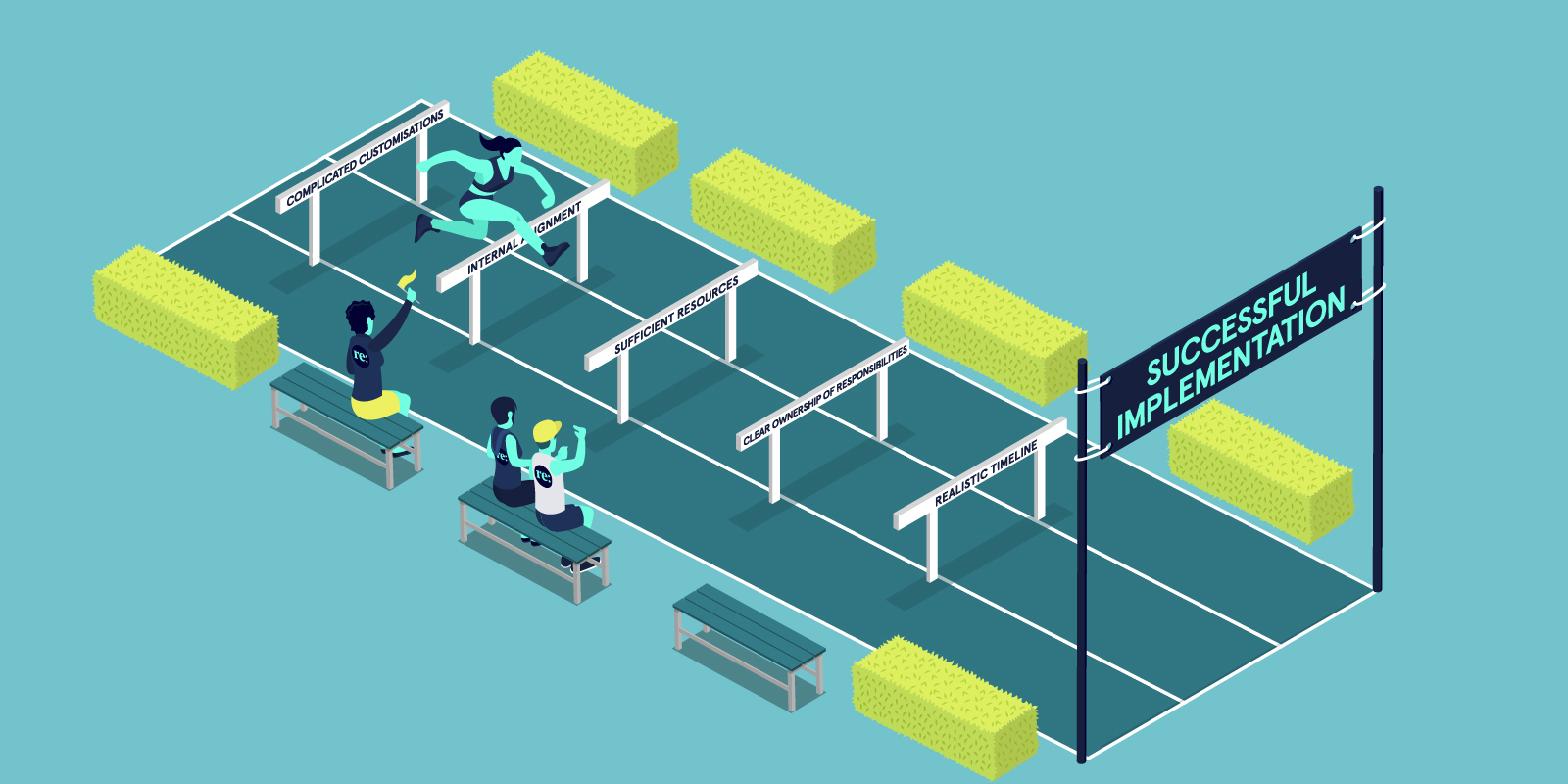Introducing a new enterprise software is no easy task. The fruits of one’s effort are not borne immediately. It is a challenging process needing an abundance of clarity, patience and commitment. Knowing where the risks lie and learning from others’ mistakes are key to a smooth and stress-free implementation.
So why go through a software implementation process at all? For one, the benefits of implementing better enterprise software—reduced costs, tighter workflow, more profit—far outweigh the hurdles and help stay competitive. In addition, the software implementation process is getting easier. In their 2019 survey, Panorama Consulting Solutions found that 88 percent of enterprises rated their latest ERP projects a success, up 30 percent in just four years.
While every software implementation comes with challenges, most pitfalls are avoidable. By anticipating and addressing potential problems, business leaders can keep staff and stakeholders happy—saving thousands, if not millions in time, turnover, and operational costs.
In this article we will:
- Walk through a failed enterprise software implementation case study
- Outline 5 of the biggest challenges in implementing enterprise software
- Give tips on how to avoid common software implementation challenges
How one missing software feature lead to a €500 million failure
In 2011, the marriage of ERP specialists, SAP, and global grocery chain, Lidl, seemed a match made in heaven—two German giants combining forces to replace Lidl’s legacy inventory system. Seven years and €500 million later, the fairytale fell apart and Lidl pulled out.
While it was not one thing that caused Lidl to walk away, one missing feature set in motion an avalanche of issues. By default, SAP for Retail, bases inventory systems on the sale price. However, Lidl’s self-made solution based inventory systems on purchase price. Keeping it this way was a non-negotiable for Lidl.
So, after executive IT turnover, dissatisfaction with the consulting team, and customisation attempts leading to more implementation problems, Lidl left SAP for its older, self-made system.
While Lidl’s story is a sad one, there are many lessons to be learned from this and other software implementation mistakes to avoid pricey repeats.
5 biggest software implementation challenges in the enterprise
- Complicated customisations
This may sound obvious, but before you sign the dotted line, make sure the software can actually do what you need it to. Enterprise SaaS is too often a black box, leaving you at the mercy of your vendor for updates and customisations. Always read the fine print and work with companies with flexible features and AI. Banking on untested customisations to turn out the way you want is a dangerous game.
Consider the following industry and company needs before pulling the trigger on slick new software:
- Compliance
- Regulations
- Security
- Privacy
- Integrations
- Customisation
- Brand
- Compatibility
A reliable process for evaluating a software onboarding process is to use a checklist.
Takeaway: Look for software providers with customisable options, run all your customisation use cases by the software company before signing, and consider hiring additional talent for technical customisation and deep integration.
- Lack of internal alignment
In a recent enterprise case study, Henrico Dolfing said, “No one wins when a project is misaligned with executive priorities.”
According to a 2019 research, lack of organisational and executive support and issues managing user expectations and change management were the biggest challenges with implementing an ERP.
It’s natural for employees to resist change, more so if they don’t see the point. Taking time to explain the benefits of the move and arming employees with adequate training can save countless headaches later on.
Takeaway: Communicate benefits and responsibilities early on so everyone is working towards a common goal. In the enterprise, large-scale software decisions often start with an RFP process. By consulting with every department, you know from the get-go what the budget is and which features are non-negotiable.
- Insufficient resources
Enterprises get into trouble when they expect too much of their employees. Not only are the employees not experts on the new software, they also have full-time jobs. Too often, implementing new software feels like a second job. Tempting as it may be, overloading employees to save a buck is a good way to lose them for good.
To meet deadlines and avoid turnover, enterprises should consider setting aside time and budget for an implementation partner to train employees. Now, this can be a hard pill for executives to swallow. After all, they are adding new software to improve efficiency and save money. However, specialists should be thought of as a one-time, high ROI investment.
Takeaway: Make sure your company is fully loaded with well-equipped IT and operations teams. Depending on project size, you may also need to hire additional consultants or software implementation specialists.
- No clear leader to take responsibility
Someone needs to take the reins. Without a clear project manager, responsibilities become murky and diluted.
A common example of this is when a new CEO inherits a software implementation project from his or her predecessor. The new CEO has no attachment to the project and someone else (a project manager with no decision-making power) is running the show. Because the CEO feels no responsibility for its success, he or she is more likely to pull the plug and start over when things go sideways. And it will go sideways with this setup.
Takeaway: A member of the executive team should own the project. Once that leader is announced, they should assemble a task force with defined roles and responsibilities.
- Unrealistic timeline and moving targets
The average software implementation can last from 11 to 18 months, with over 35 percent of ERP implementations taking longer than expected.
Why the hold up? Migrating data takes time. Because the two systems don’t speak the same language, data needs to be mapped out before the big move. However, finding a way to keep the enterprise up and running during the transition is near impossible without the right team—causing companies to cancel software migrations months (even years) into implementation.
Takeaway: Map out the migration first. Make sure you have the talent, time, and resources to see it through. Meanwhile, ask IT to put together a plan that ensures uptime for day-to-day business operations. Also, take note of what “unfortunate time” looks like for your company—payroll, holidays, tax season? Then, compare those plans and identify potential red flags between the schedules.
Take control of your software implementation project
Software implementation challenges keep status quo enterprises from making changes they desperately need. In the short term, it seems easier to stand pat. However, in today’s market, complacency leads to irrelevance. The Googles and Amazons of the world continue to steal market share. To compete, enterprises must learn to work faster and smarter. That means bucking up and adopting the best enterprise software for the job.






